Residency at London Marriott Hotel Canary Wharf sees the painter and RNLI coxswain exhibit works
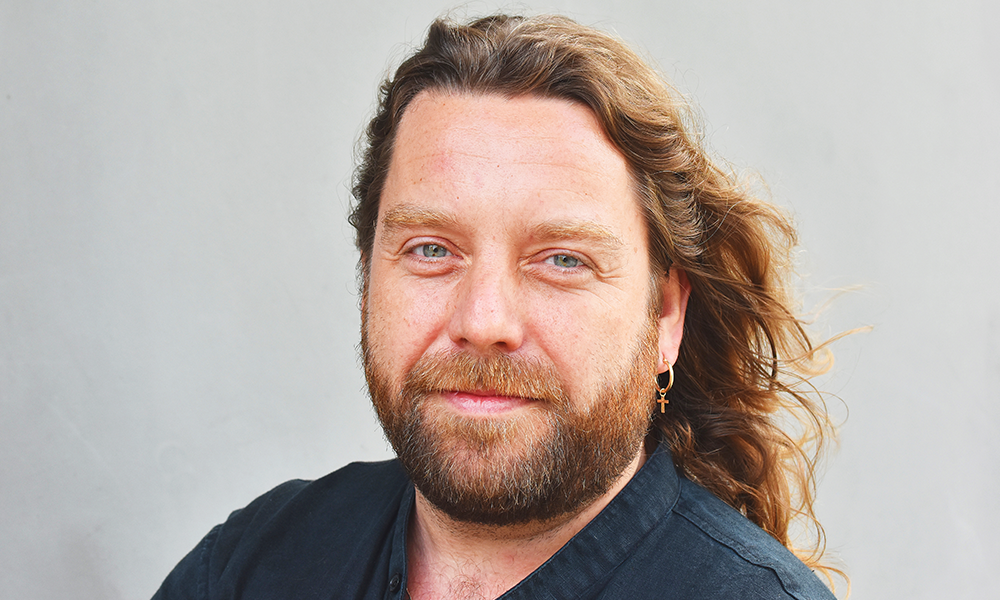
Subscribe to our Wharf Whispers newsletter here
There’s a moment during our interview where Mark Taylor’s voice falters.
The son of successful artist Dallas K Taylor went to art college to become a painter like his father, but wound up initially rejecting his style.
“He painted landscapes and seascapes – it was very commercial,” said Mark.
“He had an art gallery in the North East where I’m from, so I grew up around him working – but I thought I wanted to be a proper artist like Jackson Pollock or Mark Rothko.
“I’d come down to Tate Modern in London and be completely absorbed by the scale of their works.
“Seeing Summertime by Pollock, I was just completely taken away by the real thing. A couple of inches on the page of a book just doesn’t compare.”
After completing a degree in fine art, however, Mark decided to go into boat design rather than opt for the life of a struggling painter – building on a lifelong love of the water, having been raised on boats growing up in Blyth.
“During my degree I’d partnered with boat builders and went to work for a company called Sealine in Kidderminster,” he said.
“I used to watch their £2.5million fancy boats go off down the road on trailers escorted by vehicles with flashing lights, and I realised I was landlocked – it was my dream job, but in the wrong location. I needed to get back to the coast.”
A project helping an artist put together a portfolio led Mark to turn to the classroom as a profession, moving back to the North East to lecture in fine art in the Newcastle area.
“It meant I could be on the lifeboat like my dad and I could teach art as well, so that’s what I did for many years,” he said.
“Then my father discovered he had Motor Neurone Disease and he went downhill pretty fast.
“At that time, he had a 12-month waiting list for his artworks but wasn’t able to fulfil his orders.
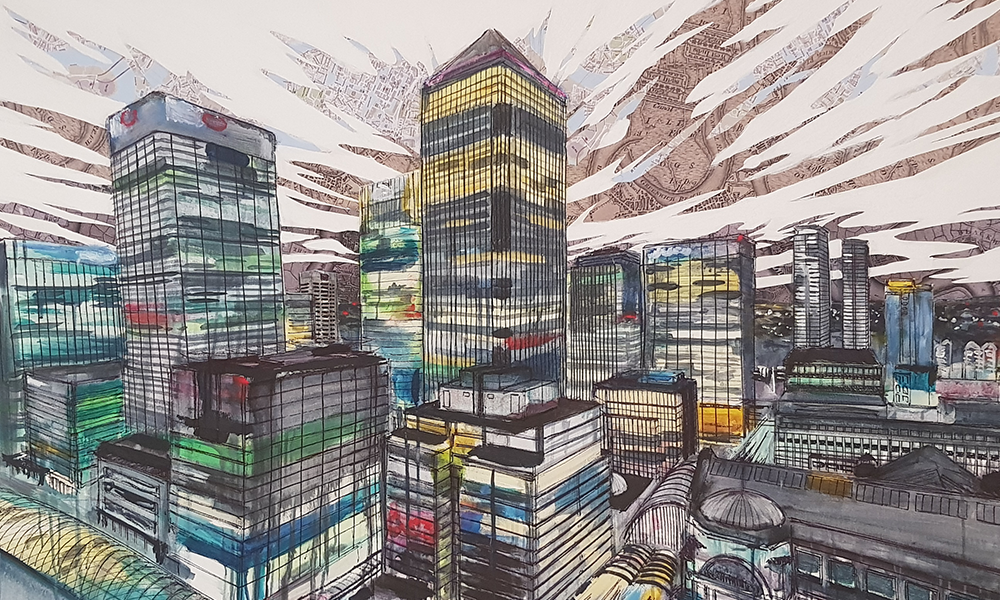
“So I decided to leave my position at the college to become his full-time carer.
“I went back to the family home and looked after him and, during that time, I told him I would paint his pictures.
“I’d learned how to make work like his to pay my way through university – I’d nick his style, hang work in his gallery and sell it.
“During the months I cared for him, he showed me a few techniques to emulate his style with a palette knife in oils.
“He taught me to smear the paint on the palette and to cut through it so that, with practice, you can get a thin precise line – perfect for the mast of a boat or a line on a building.
“I developed that style and one day I was painting a very famous scene – the bridge over the Tyne in Newcastle looking down to the quayside. It was a historic scene with horses and carts in the foreground.
“When my father saw it, he said that he couldn’t have ever painted the horses like that and if I could, then I would never be hungry.”
It’s here Mark’s voice falters at the memory – a moment not long before his father died.
“It was really amazing to think I had taken his technique and been able to continue his legacy – to paint like him and then for him to say that he couldn’t have done it himself felt great,” said Mark
“For more than a decade now I’ve continued painting like him but increasingly putting more of myself into it.
“Now I’ve got my own identity I’ve started branching out into different techniques with collage and acrylic rather than oil paint.
“It’s a bit like being a musician – you do a first album, then a second that’s different and now I’m on my third in the London market, which is fantastic.”
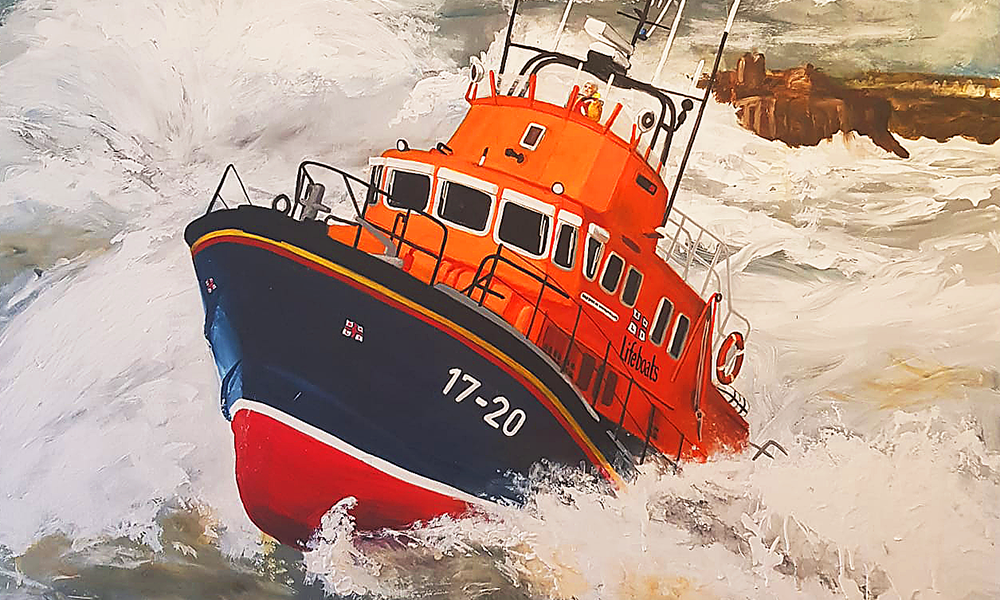
READ THIS NOW Sorry to break the flow of the article, but there’s something else that adds depth to Mark’s character. His father also gave him a lifelong love of being on the sea, coupled with the example of stalwart service saving lives in the RNLI. Having moved back to the North East, Mark began volunteering on the lifeboat as Dallas had before him. Rising rapidly through the ranks (thanks to his dad training him in water safety from an early age), he’s now the coxswain for the Tynemouth all-weather lifeboat – the largest in the charity’s fleet – as well as helmsman for the station’s inshore inflatable lifeboat. While there’s probably enough material for a book in his more than 16 years of volunteering, to save lives in some of the most extreme conditions on the water – one tale stands out. “I’d just qualified as a navigator when we got the shout that a vessel was sinking 110 nautical miles off the coast,” said Mark. “We knew we’d have only enough fuel to get out there, do a search and then return so everything was on me to get to the right place. “The search area was huge – the drifts, the tide, the wind. "A helicopter picked up a very faint radio message from the stricken boat and we managed to find the vessel, get it on tow and then pull it back to Sunderland over about 14 hours. “It feels incredible when you can get someone back to their family who would have drowned if it wasn’t for the RNLI. “That one turned out to be the farthest rescue from shore ever completed in the organisation’s 200-year history and it was my first shout as a newly-trained navigator. “You risk your life, but there’s a reason why you’re doing it. “People’s lives are in grave and immediate danger so we go out in all conditions. “It’s a great thing to be able to do and an honour to be the coxswain, following the retirement of Michael Nugent who I’ve looked up to all the way through.” Go to rnli.org to make a donation to the charity
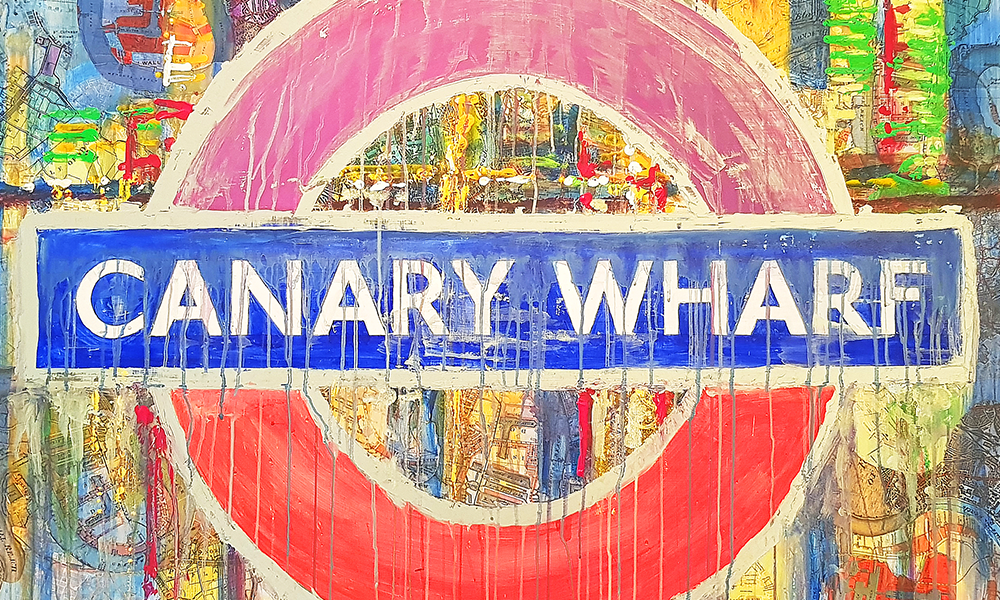
Which brings us in a roundabout sort of a way to why Mark is featured by Wharf Life.
Having mostly painted coastal scenes and architecture, one of his works was selected for the Royal Society Of Marine Artist’s annual exhibition, an accolade that won him the attention of the London Marriott Canary Wharf on West India Quay.
Recently appointed its artist in residence, Mark has created a series of paintings currently on display there, with more planned to spread throughout the building.
The works use acrylic and, frequently, collage of historic maps of the area, to capture Canary Wharf and views of Docklands as it is today.
“The docks are massively important, when you look at the history of this area and how that has influenced the buildings we have, and the new towers – it’s about celebrating what’s here,” said Mark.
“You’re capturing moments in time. The first painting I did for this series was looking at Canary Wharf from Blackwall Basin – there’s a lovely bit of water there with the reflections of the buildings all around it.
“I took a photograph of that and then, the next time I came down, a concrete lift shaft for a building under construction had sprung up in the middle of the scene so that view is now lost.
“But I was able to capture it and put it in this painting.
“Then, the next paintings can celebrate what is coming in the future.
“For some of the other pieces I was researching what the area had been like and I realised the colour of one of the maps I was looking at was like the windows of the office blocks at night so I began working pieces of collage into the painting.
“That way I have the new in the work while honouring the heritage of the area too.
“I’ve spent the last 11 years concentrating professionally on my art, developing and bringing new elements into my work.
“With the Royal Society exhibition and this residency I think I’m definitely on my way to qualifying as a decent artist.
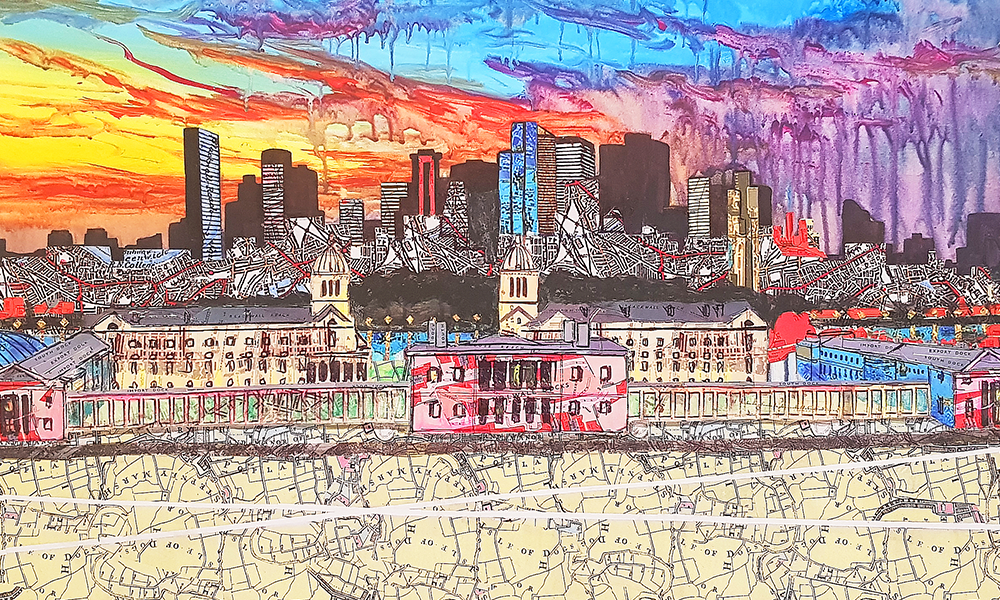
“It’s a bit like climbing a mountain – you get to the top and you realise there’s another peak you just didn’t see until you reached that point.
“What I’ve also realised is that my dad was always a great artist – he painted pictures people loved and would request again and again.
“For me, painting standalone works is exciting and I’ve been able to take his technique somewhere completely different.
“I get totally absorbed by the work. I’ll often go into the studio at 10.30am and paint right through until 1.30am. It’s amazing to be in that creative space.
“Luckily I live within sight of the lifeboat station, so when the pager goes off I can drop my tools and go straight out.
“Going on a shout puts everything in perspective. The other day I was under real pressure to get this picture finished for a client.
“I was really feeling it – at a moment where you don’t know where to stop. Is it going right? Is it going well now, but is it going wrong?
“Then I got the call and me and two crew had to go and extract a casualty trapped on the shoreline in a heavy surf, which we managed successfully.
“After being out at sea with the adrenaline pumping, saving someone, I was completely calm.
“In the greater scheme of things if you make a mistake on the canvas you can always paint over it.”
Mark’s work is on display at the Marriott on an ongoing basis, with each original piece also for sale. Prices start at £11,500.
Mark is also set to come and produce some of his work at the hotel itself starting in July, although exact dates are yet to be confirmed.
Wharfers are welcome to come down on these occasions and meet him amid his paintings.
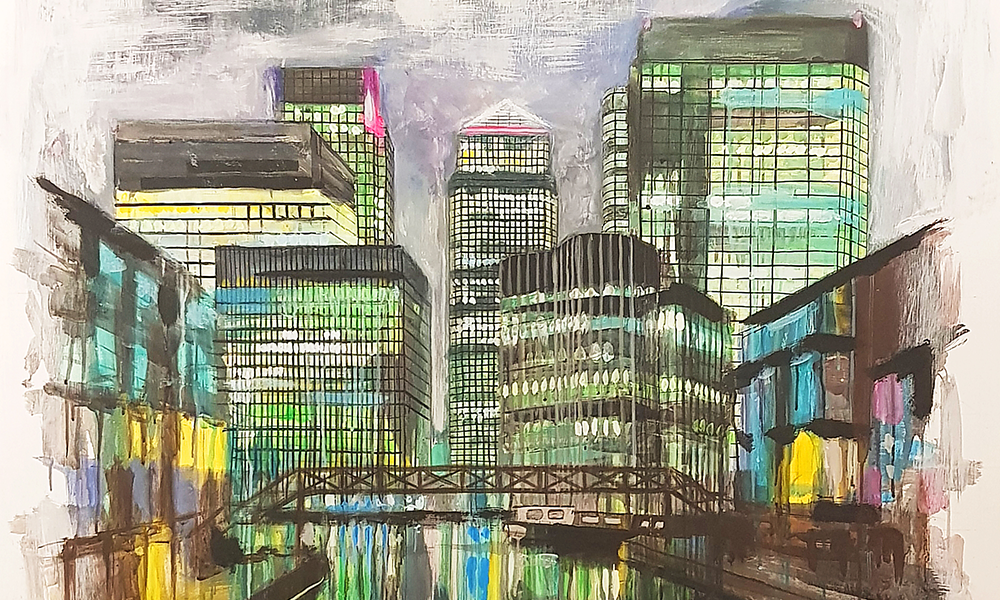
Read Wharf Life’s e-edition here
Subscribe to our Wharf Whispers newsletter here
- Jon Massey is co-founder and editorial director of Wharf Life and writes about a wide range of subjects in Canary Wharf, Docklands and east London - contact via jon.massey@wharf-life.com




4 Replies to “West India Quay: How artist Mark Taylor is capturing Canary Wharf and Docklands”
Comments are closed.